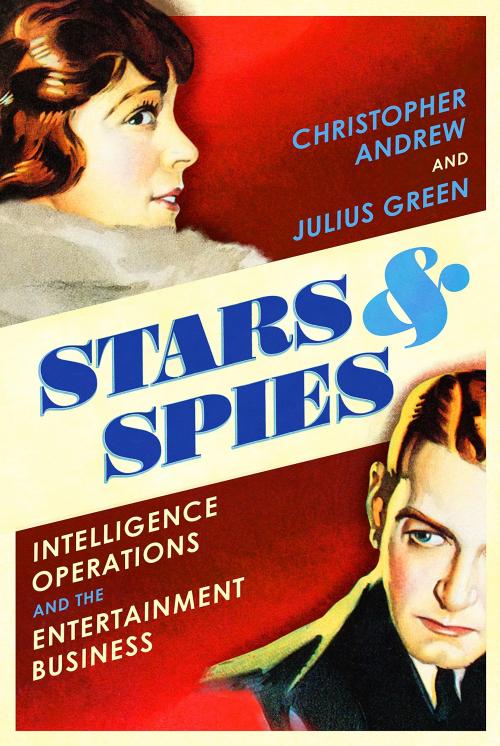In Case You Missed It Part 11
Acquisitions staff returns with another highly subjective selection of recent arrivals, new and old, that caught our eye but may not have received prominent reviews or publicity. The books here were culled from the many that arrived late winter into the spring, so we hope to return to this space soon with another list. So many books, so little time.
You can browse previous ICYMI installments here, but to build a reading list nothing beats our monthly new books lists (except, of course, browsing the stacks). The lists are available on the website and in the Library. Each contains 175 – 250 titles, and hopefully something for every reader in our membership. See the current list here.
Jump directly to: HISTORY | PERFORMING ARTS | FICTION | MEMOIRS & LITERATURE | ART, ARCHITECTURE, PHOTOGRAPHY | FASHION | RELIGION & PHILOSOPHY
HISTORY
Christopher M. Andrew & Julius Green | Stars and Spies: Intelligence Operations and the Entertainment Business
A UK import, we purchased this from the excellent John Sandoe Books in London. Christopher Andrew is Professor of Modern and Contemporary History at Cambridge University and in-house historian for MI5, and Julius Green is an award-winning theatre producer and entertainment historian. In Stars and Spies, they explore the crossover between show business and espionage from the 16th through the 20th century. Andrew and Green argue that the two professions require similar skills—deception, role-playing and the ability to create and stick to scripts—and that both fields attract men and women at ease with the lifestyle common to itinerant entertainers and undercover agents. The book’s lively cast includes Christopher Marlowe, Aphra Behn, Giacomo Casanova, Voltaire, Mata Hari, Harpo Marx, Josephine Baker, Somerset Maugham, Graham Greene, Noel Coward, Alexander Korda, John le Carré and more. The Spectator praises the authors’ ability to “marshal their rare facts splendidly and use them to spin ripping yarns," and The Economist notes that “anyone who loves a good spy story will find and enjoy hundreds of them here.”
Helen Fry | Spymaster: The Man who Saved MI6
Although largely unknown, Thomas Kendrick was central to the British Secret Service from its beginnings through to the Second World War. Under the guise of "British Passport Officer," he ran spy networks across Europe, facilitated the escape of Austrian Jews, and later went on to set up the "M Room," a listening operation which elicited information of the same significance and scope as Bletchley Park. He is finally getting his due recently, being compared to Oskar Schindler for his heroic and humanitarian efforts during WWII, and Helen Fry brings the man to life in this biography. The Jewish Chronicle: “...a remarkable story, exploring both the private and public life of Thomas Kendrick; not an easy task given that Kendrick lived most of his life in the shadows.” In this review, The Guardian calls Spymaster “an extremely valuable contribution” and “exhaustively-researched.” The Library has two other recent books by Helen Fry on intelligence operations, all published by Yale University Press.
Anna Neima | The Utopians: Six Attempts to Build the Perfect Society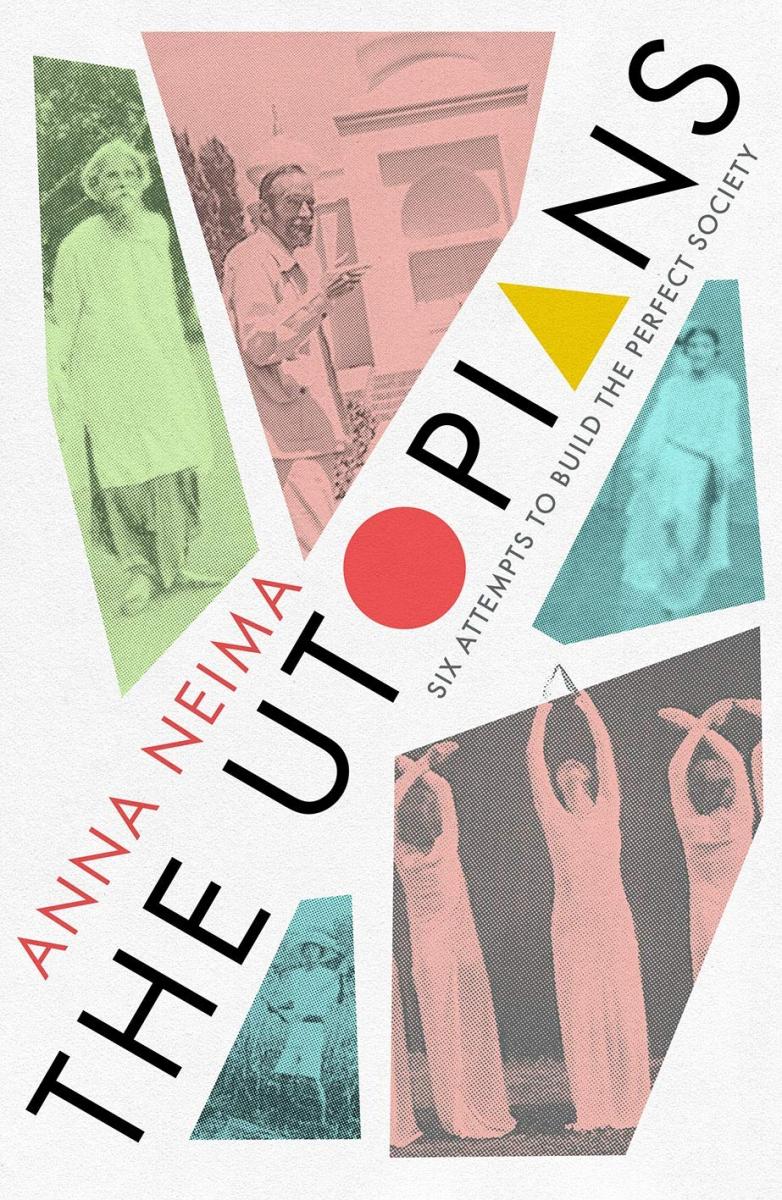
The years following the First World War provided fertile ground for utopian communities. As the conflict came to an end, charismatic leaders and their idealistic followers coalesced around new and experimental ways of living. Anna Neima looks at six of these communities in Germany, India, France, Japan, the UK, and the US. Lots of prominent names turn up, including several literary figures like Katherine Mansfield, W.H. Auden, and Rabindranath Tagore. She investigates not only these communities’ origins and their active years, but their continued influence—some of them still attracting followers today. In doing so, she offers an original perspective on the entire period and a new way of navigating its artistic and ideological upheaval. The Spectator: “There are plenty of fascinating stories here, and by showing how a global crisis can lead people to question tradition and reshape society, the subject remains important to this day.”
Lillian Faderman | Woman: The American History of an Idea
Lillian Faderman is an internationally known feminist scholar of LGBT history and literature. Her books have won many awards and much acclaim. Woman is an ambitious attempt to write a comprehensive history of the struggle to define womanhood in America, from the seventeenth to the twenty first century. Although reviews of her latest were occasionally mixed, all noted that Woman features Faderman’s usual commitment to scholarship and clear writing (“exhaustively researched and finely written, with more than 100 pages of endnotes” —New York Times). The reviewer in Kirkus raves: “This highly readable, inclusive, and deeply researched book will appeal to scholars of women and gender studies as well as anyone seeking to understand the historical patterns that misogyny has etched across every era of American culture. An intelligently provocative, vital reading experience.”
Christopher Hayes | The Harlem Uprising: Segregation and Inequality in Postwar New York City
In July 1964, after a white police officer shot and killed an African American teenage boy, unrest broke out in Harlem and then Bedford-Stuyvesant in what would be the first of the 1960s urban uprisings. Protests rose to call for an end to police brutality and the unequal treatment of Black people in a city that viewed itself as progressive. Christopher Hayes (History, Rutgers University) examines the causes and consequences of the uprisings, from the city's history of racial segregation in education, housing, and employment to the ways in which the police both neglected and exploited Black neighborhoods. Turning to the aftermath of the uprising, Hayes demonstrates that the city's power structure continued its refusal to address structural racism. Publisher’s Weekly: “Unpacks the causes and effects of the uprising in scrupulous detail and makes salient connections to recent events. This scholarly history is a powerful reminder that it takes “great force” to bend the moral arc of the universe toward justice."
James R. Gaines | The Fifties: An Underground History
“Inspiring activists populate a useful revisionist history”—Kirkus. Using a series of biographical portraits, Gaines upends the popular perception of the 1950s as a decade of conformity, quiet contentment, and conservatism, profiling a group of activists who dared to speak out against sexism, homophobia, racism, classism, and environmental contamination. The Guardian: “Gaines's great skill is to use individual life stories, with all their messy contradictions, to dislodge entrenched narratives about life in postwar America.”
Maureen Quilligan | When Women Ruled the World: Making the Renaissance in Europe
Quilligan (Professor Emerita, Duke University) examines and recasts the complex relationships among four queens: Mary Tudor, Elizabeth I, Mary, Queen of Scots, and Catherine de' Medici. When Women Ruled the World shows how these regents carefully engendered a culture of mutual respect, focusing on the gift-giving by which they aimed to ensure ties of friendship and alliance. Kirkus: “An authoritative and sympathetic collective biography.” Publisher’s Weekly: “Quilligan lucidly explains the era’s complex familial, religious, and political dynamics, and draws incisive character sketches. Renaissance buffs will treasure this sparkling revisionist history.”
Daniel S. Levy | Manhattan Phoenix: The Great Fire of 1835 and the Emergence of Modern New York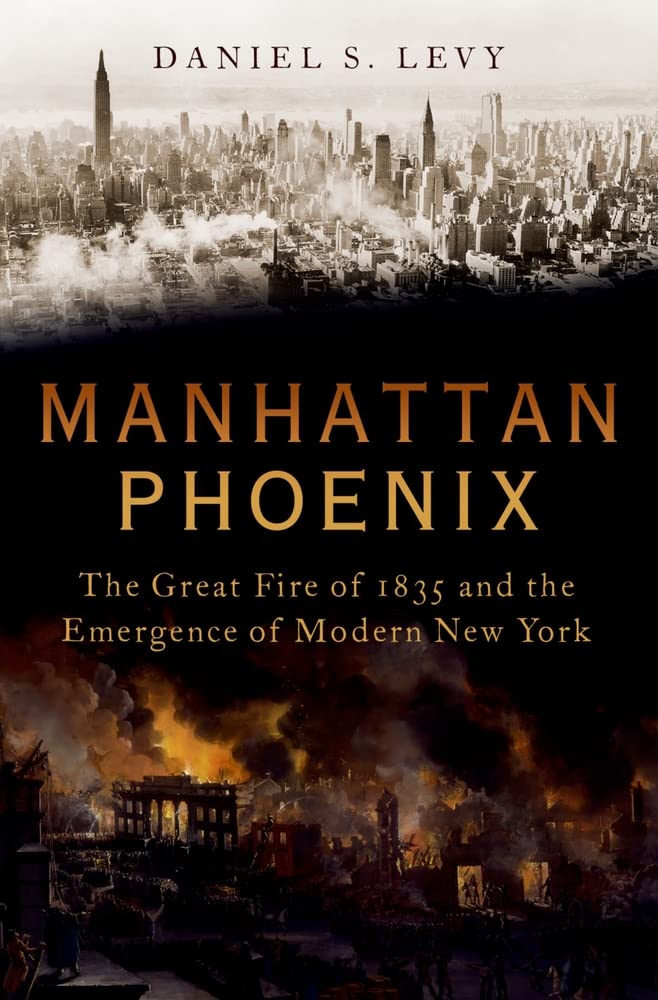
On a freezing December night in 1835, a fire erupted in lower Manhattan that would become known forever as the Great Fire of 1835. By the time the flames were extinguished, nearly 700 buildings were destroyed. Author Daniel Levy explores how New York City emerged from the ashes to become a global powerhouse merely a quarter of a century later, quickly growing into one of the world's greatest metropolises. The cast of the book includes a colorful set of New Yorkers who took part in the city’s nearly miraculous transformation, including John Jacob Astor, Bowery Theatre impresario Thomas Hamblin, African American restaurateur Thomas Downing, Fire Chief James Gulick (who battled the Great Fire), architect Alexander Jackson Davis who built marble palaces for the rich, abolitionist Arthur Tappan, engineer John Bloomfield Jervis (who succeeded in bringing clean water into homes), and Central Park visionaries Frederick Law Olmsted and Calvert Vaux. The Guardian: “whoever shares Levy’s enthusiasm for America’s most important city will treasure this book, for its good judgement and its many unexpected pleasures.”
PERFORMING ARTS
Daniel Talbot | In Love with Movies: From New Yorker Films to Lincoln Plaza Cinemas (foreword by Werner Herzog)
When Daniel Talbot and his wife Toby opened the New Yorker Theater on the Upper West Side in 1960, they cultivated a loyal following of film buffs and cinephiles. Their roles as pioneering tastemakers arguably changed the way art house audiences went to the movies—not just in New York, but around the world. Talbot went on to run several theaters including Lincoln Plaza Cinemas, as well as the influential distribution company New Yorker Films, introducing American audiences to crucial foreign and independent filmmaking (French New Wave, New German Cinema, etc.). Before his death in 2017 at 91, he penned this memoir, edited by Toby Talbot. Library Journal notes that “his remarkable relationships with directors—Louis Malle; Roberto Rossellini; Jean Eustache—make for tantalizing reading, and his enthusiasm for finding the brilliance in obscure films is contagious.”
Kira Thurman | Singing like Germans: Black Musicians in the Land of Bach, Beethoven, and Brahms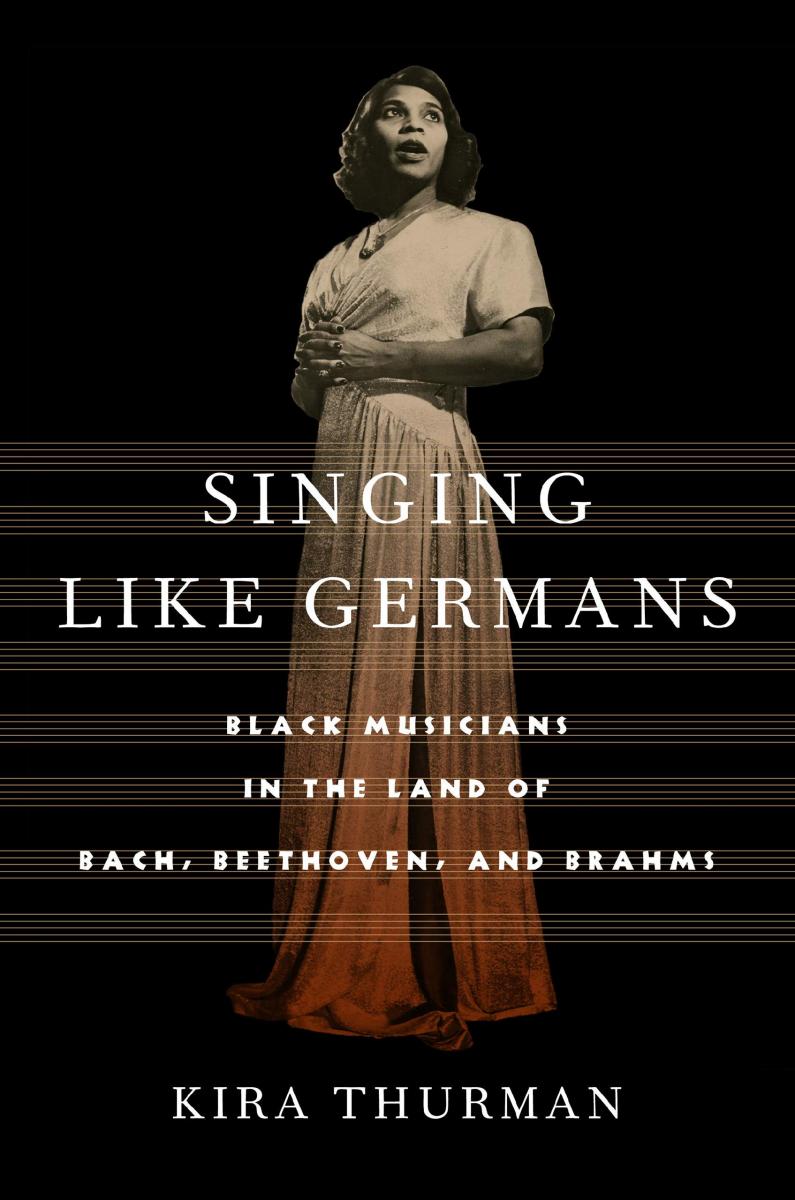
Kira Thurman is Assistant Professor of History and Germanic Languages and Literatures at the University of Michigan and a classically trained pianist who grew up in Vienna, Austria. In Singing Like Germans, she chronicles Black musicians in German-speaking Europe over more than a century, exploring how Black performers challenged racial identities in the concert hall. While Germans and Austrians located their national identity in music, championing composers as national heroes, the performance of their works by Black musicians complicated the understanding of who had the right to play them. Questions of performance authenticity are questioned and subjected to Thurman’s rigorous analysis. The Los Angeles Review of Books describes the book as “at the vanguard of cultural histories reexamining musical production and consumption through the lens of critical race theory.”
Joseph Horowitz | Dvořák's Prophecy: and the Vexed Fate of Black Classical Music
The titular prophesy was made by Dvořák in 1893: that a "great and noble" school of American classical music would soon emerge based on the searing "negro melodies" the visiting Czech composer heard during a recent visit and that “this must be the real foundation of any serious and original school of composition to be developed in the United States.” But while Black music would found popular genres known the world over, why did it never gain a similar influence in the concert hall? To answer this question, Joseph Horowitz ranges throughout American cultural history, and challenges the standard narrative for American classical music fashioned by Leonard Bernstein, Aaron Copland, and others. Horwitz’s new classical canon makes room for pioneering and unheralded Black composers including Harry Burleigh, Nathaniel Dett, William Dawson, and Florence Price. Kirkus: “His chronicle of ‘a failure of historical memory’ is feisty and opinionated but always backed by solid evidence. Essential cultural history.”
Eddie Muller | Dark City: The Lost World of Film Noir
If you watch TCM, you likely know Eddie Mueller, the host of “Noir Alley.” Sometimes called the Czar of Noir, Mueller is one of the world’s authorities on the genre...or style, depending on which side of that debate you sit on. This is a 2021 “revised and expanded edition” of his enthusiastic, stylish, image-heavy, wise-cracking, and fact-filled look at film noir. It provides a fun counterpoint to the sometimes dry academic critiques of these films. If you are new to these films or a long-time obsessive, you will likely find something new for your “to watch” list.
Richard Koszarski | Keep 'em in the East: Kazan, Kubrick, and the Postwar New York Film Renaissance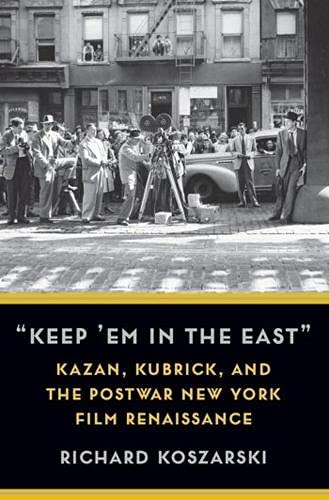
Richard Koszarski chronicles the origins of New York's postwar film renaissance, examining the social, cultural, and economic forces that shaped New York filmmaking. He also shows how decades of low-budget independent production taught local filmmakers how to capture the city's grit, liveliness, and allure. The book touches on classics such as Naked City and Kiss of Death and includes detailed production histories of On the Waterfront and Kubricks’ first feature, Killer’s Kiss. But Koszarski goes beyond the classics, looking at the importance of "race films"—all-Black productions intended for segregated African American audiences—that not only helped keep the film business afloat but also nurtured a core group of writers, directors, designers, and technicians. Richard Koszarski is professor emeritus of English and Cinema Studies at Rutgers University, was formerly a curator at the Museum of the Moving Image, and is the author of Hollywood on the Hudson: Film and Television in New York from Griffith to Sarnoff.
FICTION: Rediscovered and reissued
F. Tennyson Jesse | A Pin to See the Peepshow
We highlighted the British Library Women Writers series in ICYMI – 9, and A Pin to the See the Peepshow is another well-regarded forgotten classic on their list. Fryn Tennyson Jesse had a long, prolific career, but is largely forgotten today. (We have 13 of her works in the stacks. Forgotten? Perhaps. Gone? No.) Much of her oeuvre strays into true crime territory and A Pin to See the Peepshow (originally published in 1934) is a thinly fictionalized account of the life of Edith Thompson, one of the three main players in a sensational murder that took place in a fashionable London suburb in 1922. In a Guardian piece on the novel and the murder that inspired it, Sarah Waters calls the book as “a small masterpiece,” praising “the intensity of the narrative, and its dogged commitment to its flawed, doomed heroine” and the “tremendous humanity with which A Pin to See the Peepshow embraces Thompson's tragedy.” Jesse adapted the novel into a play which debuted on Broadway in 1953.
Heimito Von Doderer | The Strudlhof Steps: The Depth of the Years
A recent publication in the excellent New York Review Books Classics series.
The Strudlhof Steps is a rich, complex portrait of Vienna in the early twentieth century, featuring a vast cast of characters. Originally published in 1951, this is the first English translation from the German. Comparisons to Kleist, Kafka, Zweig, and others appear in reviews. Francine Prose writes that “Doderer’s Vienna is as lovingly mapped as Balzac’s Paris, Joyce’s Dublin, Dickens’s London” and that it has “all the traditional rewards of nineteenth-century fiction [but] scrambled by modernist disregard for the conventions of chronology, introduction, and explanation... I was sorry when I finished the book...The Strudlhof Steps invites instant rereading.”
Francis Bellerby | Selected Stories (edited and introduced by Jeremy Hooker)
Known more as a poet, and to relatively few readers, the short stories of Francis Bellerby (1899-1975) have been described in glowing terms in outlets like the indispensable Neglected Books Page and in Lucy Scholes’ illuminating Paris Review series Re-Covered. Bellerby’s work bears the stamp of a life of exceptional psychic and physical pain, “fictional transformations and projections of the experiences which shaped her life...a search for understanding, charged with peculiar intensity...showing a kind of insight and knowledge” (Jeremy Hooker, in his introduction). Selected Stories has been out of print for decades.
Cookie Mueller | Walking Through Clear Water in a Pool Painted Black: Collected Stories
Cookie Mueller first tasted fame acting in early John Waters movies. Though never starring in these movies, she marshaled this little piece of notoriety with her abundant charisma and found herself an It Girl of the downtown NYC art and literary worlds of the 70s and 80s – becoming a friend/muse/subject to artists like Gary Indiana, Nan Goldin, Robert Mapplethorpe, and Chris Kraus. Mueller earned her spot among the writers with short fictions and a popular advice column featuring droll (and often terrible) guidance from “Dr. Mueller.” This collection expands on the stories previously published as Walking through Clear Water in a Pool Painted Black in 1990, by adding some previously unpublished stories, columns from the Ask Dr. Mueller series, as well as some on the scene reportage from parties with her famous friends. Mueller is a sort of east coast Eve Babitz – a party girl with sharp observations and wit to spare. Bookforum: “Walking Through Clear Water in a Pool Painted Black is a cult classic for writers, and the reissue’s new (to us) pieces demonstrate Mueller’s artistic process. They also map out her singular approach to life. In this way, ‘Dr.’ Mueller does have a lot to teach us, at least in terms of wringing absurdity from tragedy, believing in the light derived from darkness.”
Felix Salten | The Original Bambi: The Story of a Life in the Forest (translated from the German & introduced by Jack Zipes; illustrated by Alenka Sottler)
Most of us know the story of Bambi via the phenomenally successful 1942 Disney film. Originally published in 1923, Felix Salten’s story is more somber than the early English translations and the famous film that followed it. This all-new, illustrated translation, published by Princeton University Press, presents the story as it was meant to be told. Bill McKibben in the New York Times writes that because the story is now so “firmly lodged in the boomer brain as a child’s tale...is precisely why this new translation from Princeton University Press is so welcome. It turns out that Bambi is quite remarkable: a meditation on powerlessness and survival told with great economy and sophistication... a pretty brutal meditation on existence, serving as a kind of wild counterpart to Orwell’s domesticated animals on the Farm.”
Barbara Ascher | Ghosting: a Widow's Voyage Out: a Memoir
This chronicle of grief and healing following a beloved husband's death received excellent reviews in the trade magazines and deserves a wide audience. Booklist (starred review): “Ascher writes beautifully of her struggles to find her place in the world, creating passages filled with raw emotion and painful insights... Ascher describes these feelings with such intensity and rightness that readers may finally feel understood and in that way comforted. This is not an easy read emotionally, but Ascher’s journey is worth the tears.” Publisher’s Weekly (in another starred review) called it a “spellbinding examination of grief and love.”
Howard Jacobson | Mother’s Boy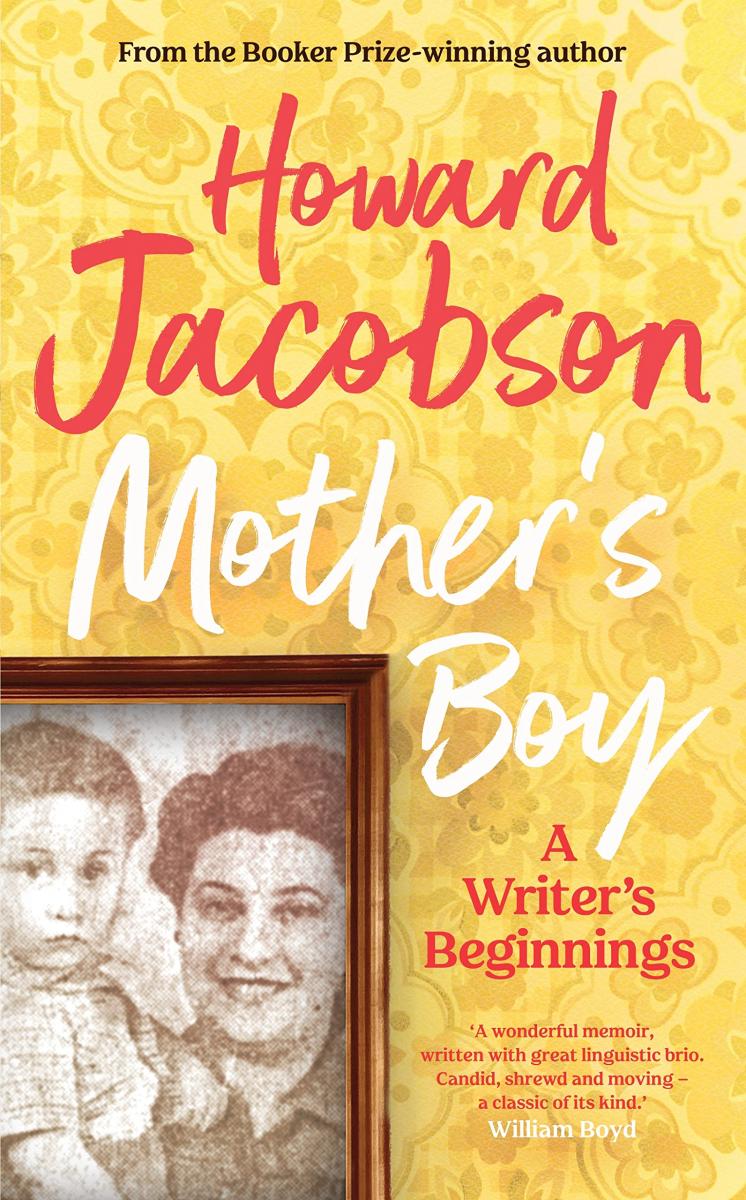
Jacobson is the writer of several comic novels, the narratives frequently revolving around the dilemmas of his British Jewish characters. (When called the English Philip Roth, he countered with the self-description, “the Jewish Jane Austen.”) His novels are well-liked at NYSL and often acclaimed by critics: The Finkler Question won the 2010 Man Booker Prize for Best Novel, while Kalooki Nights was longlisted in 2006 and J was shortlisted in 2014. Mother’s Boy: A Writer's Beginnings was published in the UK in March 2022 and has no U.S. release date yet. The Guardian describes it as “wildly lacking in proportion: melodramatic, simultaneously self-aggrandising and self-abasing, filled with fear, shame, anger, failure and the occasional triumph...if you like Jacobson’s novels, it is utterly captivating.”
Julia Copus | This Rare Spirit: A Life of Charlotte Mew
Charlotte Mew’s poetry, little known at the time of her writing, strikes its readers with the sense of discovery, as though one has found “the real thing.” This was true even towards the end of her life, when she was championed by the likes of Thomas Hardy and Virginia Woolf. Even with such heady support, she published little in her lifetime and remains on the margins of literature, finding discoverers with each succeeding generation. This Rare Spirit aims to explain the circumstances of Mew’s life and correct some of the misconceptions that accompany her poetry. The Los Angeles Review of Books: “One of the many achievements of Julia Copus’s new biography of Mew, This Rare Spirit, is its rejection of that tired view of the poet as mouse that barely roared in favor of a true sense of a spikily modern woman, bound by various obligations but resilient, headstrong, and poetically inventive.” And better still, “… another boon of Copus’s biography, [is] that it sends one back with fresh eyes to her accompanying selection of Mew’s poetry and prose published in 2019.”
Lucille Clifton | Generations: a Memoir (introduction by Tracy K. Smith)
Lucille Clifton (1936–2010) was an acclaimed and popular author of poetry and children’s books. Her memoir, out of print since 1976, is again available thanks to New York Review Books. Library Journal: “Clifton distills centuries of family history with the same potent, easy eloquence that has placed her among the first rank of American poets.... this work stands among her best. Elegiac and celebratory, unfussy and profound, full of pain and healing and thanks for the ties that hold, this slim memorial contains multitudes.” The Chicago Review of Books notes that “in many ways,” Generations was a pioneering, pivotal work, “anticipating and supporting a growing urgency among Black writers and cultural leaders to interrogate the American narrative of Black experience.”
Tara T. Green | Love, Activism, and the Respectable Life of Alice Dunbar-Nelson
This book on poet, activist, feminist, and Harlem Renaissance figure Alice Dunbar-Nelson received starred reviews in Publisher’s Weekly (“show-stopping biography... This definitive look at a remarkable figure delivers the goods”) and Booklist (“fascinating biography of a fascinating woman”). Alice Dunbar-Nelson's life and work has largely been overshadowed by her stormy, abusive marriage to the poet Paul Laurence Dunbar. Green (Professor, African American and African Diaspora Studies at the University of North Carolina) presents the first book-length look at this major figure in Black women's history, covering her life from the post-reconstruction era through the Harlem Renaissance.
Ludwig Hohl | The Notes: or On Non-Premature Reconciliation (translated from the German by Tess Lewis; with foreword by Joshua Cohen)
George Steiner called Swiss writer Ludwig Hohl (1904-1980) one of the “secret masters of 20th century German prose,” and his other admirers have included Max Frisch, Bertolt Brecht, Friedrich Dürrenmatt, and Joshua Cohen, whose novel The Netanyahus won the 2022 Pulitzer Prize for fiction. Comparisons to Kafka and Robert Walser appear in descriptions of his work. Composed between 1934 and 1936 in a state of "extreme spiritual desolation," The Notes is considered Hohl's magnum opus: an assemblage of wide-ranging observations, threaded together by an exploration of the nature and origins of creativity. Inspired by Spinoza, Goethe, Montaigne, and many others, The Notes contends with the purpose of work, the vitality of art, and the inevitability of death. The many observations, assertions, pensées, axioms, quotations, and so forth are arranged into 12 sections, each loosely grouped around a theme (“Talking, Chattering, Keeping Silent,” “Dream and Dreams,” “Image”). In The Wall Street Journal, Max Norman describes Hohl as “a soul-affirming, affable and often quite funny writer...a down-and-out humanist, optimistic but underfed.” Joshua Cohen wrote the introduction and you can read it here.
Robert A. Gross | The Transcendentalists and Their World
Robert A. Gross (Professor of History & American Studies, College of William & Mary) has written a detailed, immersive portrait of 19th-century Concord, Massachusetts, placing the Transcendentalists, including Ralph Waldo Emerson, Henry David Thoreau, and others, “in the context of the town in which they lived and wrote.” Publisher’s Weekly: “Gross delves into the subscription libraries, debating societies, and lecture series that connected community members to the wider world, and details how Emerson’s ‘call for self-reliance' was a bridge too far for many would-be Transcendentalists in Concord who still believed in the ‘ancient social ethic of New England’... Seamlessly integrating a wealth of primary and secondary sources into his narrative, Gross brings 19th-century New England to vivid life and portrays the personal dynamics between Transcendentalism’s leading figures with insight. This sweeping study brilliantly illuminates a crucial period in American history."
Rapture and Melancholy: The Diaries of Edna St. Vincent Millay (Daniel Mark Epstein, ed.) 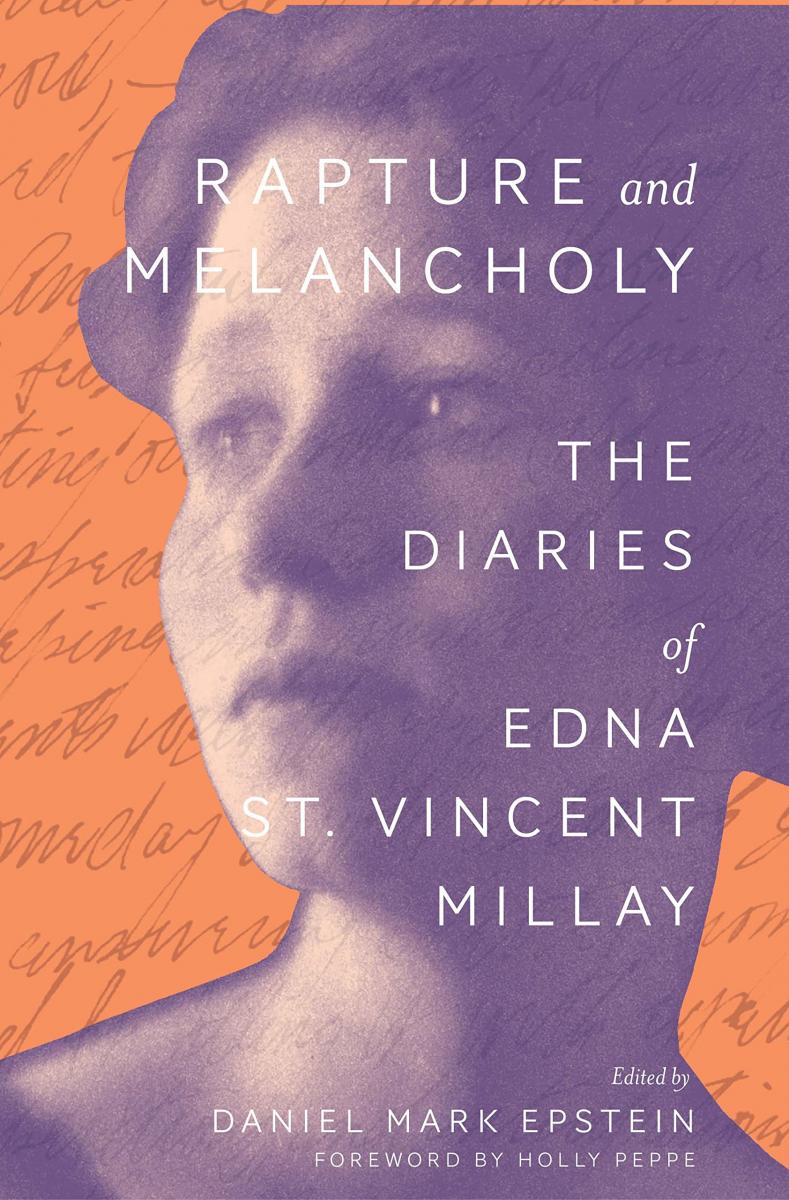
In her prime, Edna St. Vincent Millay was the most famous poet in America—her collections sold tens of thousands of copies, her readings filled theaters and halls around the country, and she earned the respect and admiration (until the rise of modernism) of her peers and critics. She won the Pulitzer Prize for Poetry in 1923. Rapture and Melancholy is the first publication of the diaries St. Vincent Millay kept from adolescence until middle age, between 1907 and 1949. The entries are focused on her most productive years until she was eclipsed by the modernists. In the late 1940s, ill health, alcohol and opiate addiction, and loneliness took their toll. “Hopefully the release of this complex woman’s diaries will draw readers’ attention to the complexity of her work” (Wall Street Journal).
Siri Hustvedt | Mothers, Fathers, and Others: Essays
Siri Hustvedt has a PhD in English literature, is a lecturer in psychiatry at Weill Cornell Medical College, and is a very prolific, wide-ranging author: her bibliography includes a book of poems, seven novels—including The Blazing World, longlisted for the Man Booker Prize—four collections of essays, and more. Her latest essay collection, Mothers, Fathers, and Others, explores family, literature, and feminist theory, combining the personal, political, critical, and clinical. Kirkus calls the collection “brilliant and utterly transfixing.” Booklist: “Steeped in literature, art, and science, Hustvedt draws on the fruits of her research and shares harrowing personal experiences as she challenges assumptions about slippery aspects of being...Hustvedt is a mind-revving investigative thinker and a commanding essayist who stirs the waters, overturns stones, opens curtains, and lifts veils with authority, refinement, and cogency.”
Afro Atlantic Histories (edited by Adriano Pedrosa)
Named one of the best books of 2021 by Artforum.
An exploration of the transatlantic slave trade, this exhibition was first organized by the Museu de Arte de São Paulo in 2018, and is now currently on view at the National Gallery of Art. The exhibition takes an in-depth look at the historical experiences and cultural formations of Black and African people since the 17th- century as rendered by artists from Africa, Europe, the Americas, and the Caribbean, bringing the complex histories of the African Diaspora to life. The catalog features about 400 artworks by 200 artists from the 16th to the 21st centuries. The works were chosen to express and analyze the ebbs and flows between Africa, the Americas, the Caribbean and Europe.
Ernst Haas | Ernst Haas: New York in Color, 1952-1962 (foreword by Alex Haas; essay by Phillip Prodger) 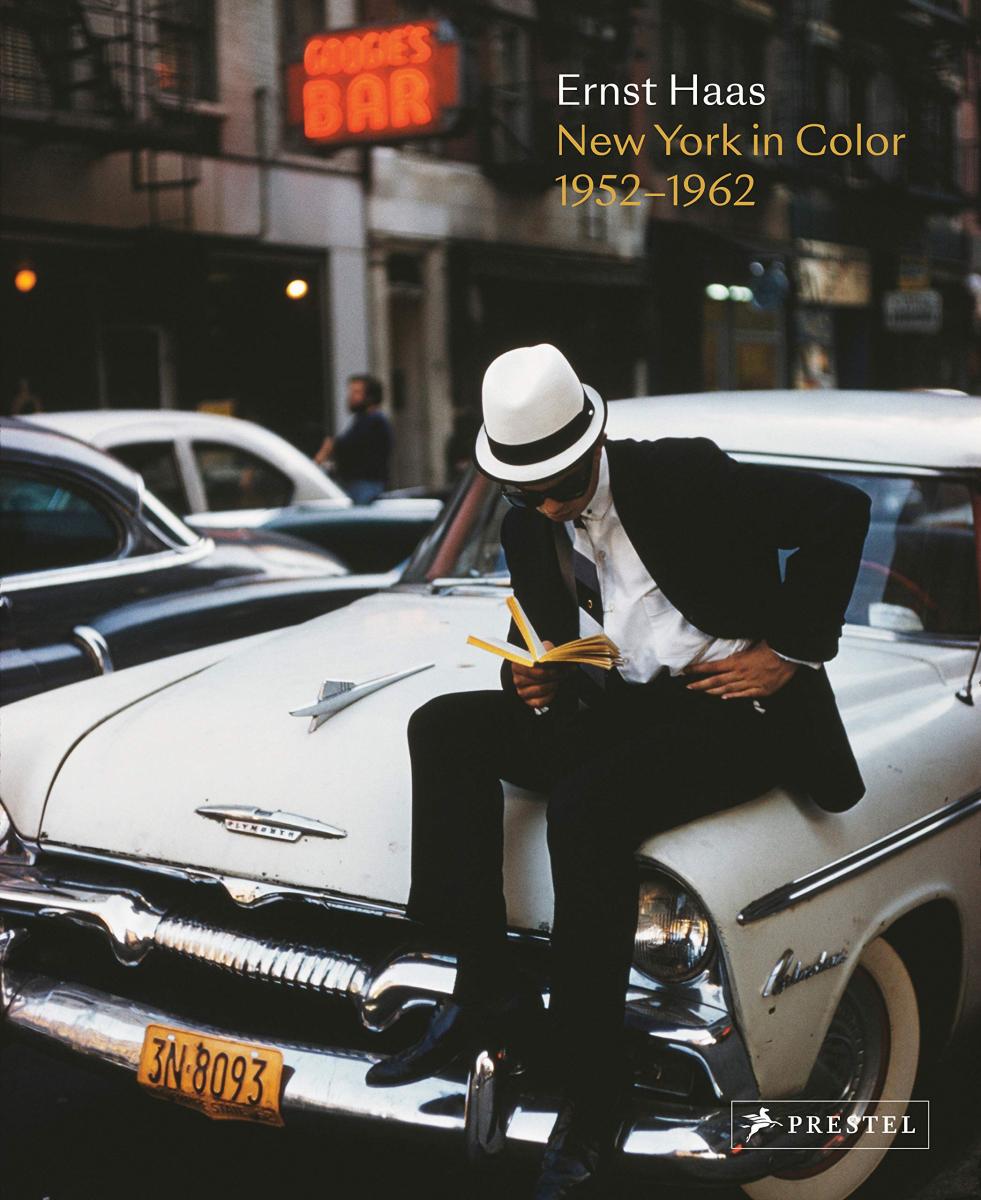
This is the first book to collect Ernst Haas’s classic and newly discovered New York City color photographs of the 1950s and 60s. Haas moved from Vienna to New York City in 1951, and the new medium of color photography seemed to him the best way to capture a city pulsing with energy and humanity. At this time, Kodachrome film was used primarily for commercial and fashion shoots; its use as a tool for street photography or art photography was fairly unusual at the time. Haas and the great Saul Leiter were pioneers in the color realm more than a decade before William Eggleston and Stephen Shore began to be (reluctantly) accepted by the art establishment in the mid-1970s. In fact, Haas’s innovative work was the subject of the first single-artist exhibition of color photography at New York's Museum of Modern Art, held in 1962. Seeing New York in the saturated glory of Kodachrome during this era is a singular visual experience.
David Godlis | Godlis Streets (foreword by Lucy Sante)
David Godlis is a legend in the south-of-14th-street art world of New York City, perhaps best known as one of the first and finest photographers to document the punk scene in the mid-1970s. This collection presents Godlis’ best street photography from the 1970s and ’80s, and the city is almost unrecognizable in its gritty, grimy splendor. Godlis has an exceptional eye and a wicked, ironic sense of humor—both served well by an amazing instinct for being at the right place at the right time. The book is introduced with an essay by the cultural critic (and equally legendary) Lucy Sante. Speaking of NYC street photography, the Society Library has an excellent collection of books on stack 12 and Library member and photographer Jeffrey Saldinger recently wrote this splendid article about it for our website.
Kenneth Frampton | The Other Modern Movement: Architecture, 1920-1970
Frampton is the author of many influential books on modern architecture and has been the Ware Professor of Architecture at the Graduate School of Architecture, Planning and Preservation at Columbia University since 1972. At 91 years old, he is still active as a critic and historian. His latest book profiles nineteen architects, each of whom consciously contributed to the evolution of the form through a key work realized between 1922 and 1962. The Other Modern Movement focuses on architects less commonly associated with modernism, revealing breadth and complexity, and showing how these works employed progressive models, advanced new methods in construction techniques, and displayed a new sociocultural awareness.
Charles Delheim | Belonging and Betrayal: How Jews Made the Art World Modern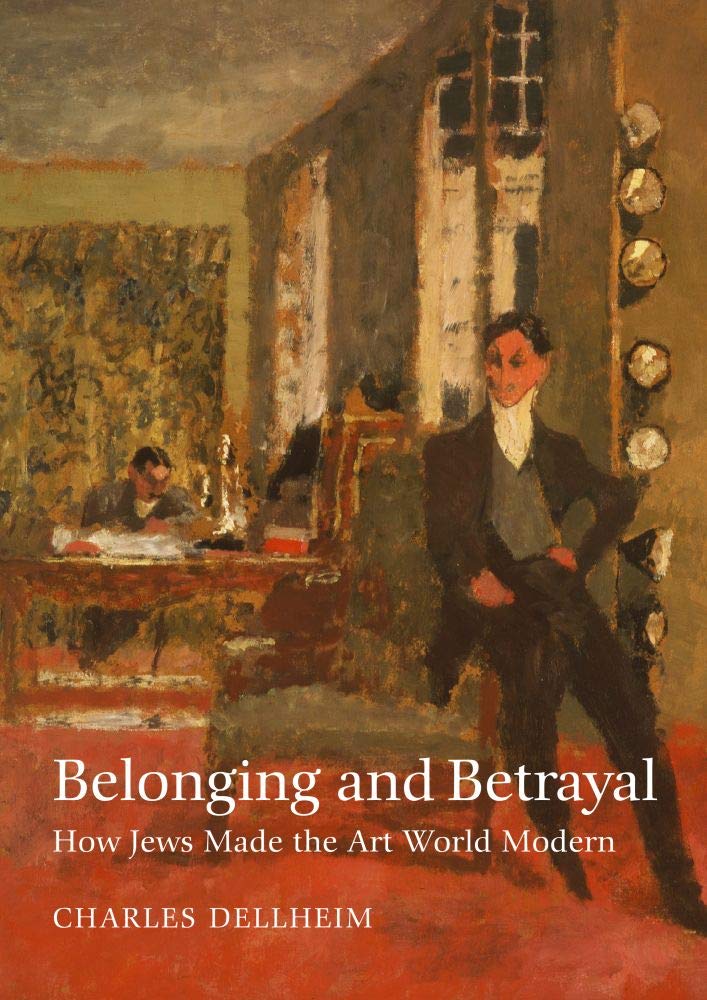
The fate of Nazi stolen art is a topic of frequent, heated discussion. But how did Jewish outsiders acquire so many old and modern masterpieces in the first place? In Belonging and Betrayal, Charles Dellheim (professor of history at Boston University) reveals the fascinating fortunes and misfortunes of a small number of eminent art dealers and collectors who, despite the vicious biases of the era and limited economic prospects, built impressive collections, became influential champions of avant-garde artists like Picasso and Matisse, and also protected historic works by old masters. Kirkus calls the book “brilliant” and “an exceptional work of scholarship.”
Roger Luckhurst | Gothic: An Illustrated History
Library Journal: “This inspired new work by Luckhurst (literature, Univ. of London) is integrative, with luxuriantly illustrated chapters to help readers see the protean nature of the Gothic sensibility...The book's four sections each approach a different corner of the Gothic imagination: ‘Architecture and Form’; ‘The Lie of the Land’ (witchcraft in urban settings vs. the superstitious rural world); ‘The Gothic Compass’ (interpretations in various corners of the planet); and ‘Monsters.’ The work's impressive interdisciplinarity reveals how Gothicism travels across media: literature, film, material culture, history, art, design, fashion—even computer games and the internet. A work of exceptional originality and fresh insight, with sparkling prose.”
Earnestine Jenkins | Black Artists in America: From the Great Depression to Civil Rights
Featuring works by Jacob Lawrence, Horace Pippin, Augusta Savage, Charles White, Elizabeth Catlett, Norman Lewis, Walter Augustus Simon, Loïs Mailou Jones, and more, this book surveys the varied ways in which Black American artists responded to the political, social, and economic climate of the United States from the time of the Great Depression through Brown v. Board of Education. Earnestine Jenkins (Professor of African American art history, University of Memphis) highlights the contributions Black artists made to Social Realism and abstraction while they debated the role of art in society and community.
Debra Bricker Balken | Harold Rosenberg: A Critic's Life
This is the first biography of Harold Rosenberg, perhaps best known as an art critic at The New Yorker from 1962 to 1978. Born in Brooklyn in 1906 to Polish immigrants, Rosenberg was an influential mover among mid-century New York art and intellectual excitement: fierce leftist political debates, rival art movements, “little magazines,” abstract expressionists, and so on. Fittingly, the book has a large cast, including friends and allies such as Hannah Arendt, Saul Bellow, Paul Goodman, Mary McCarthy, Jean-Paul Sartre, Willem de Kooning, and Jackson Pollock, and art world rivals like Clement Greenberg.
Jeffrey Ladd | A Field Measure Survey of American Architecture
This is a strange, haunting book, a portrait of America in 224 black-and-white photographs taken between the late nineteen-sixties and the late 2010s, all of which are housed in The Library of Congress Prints and Photographs Division, Historic American Buildings Survey. The photographs are stark, plain; the architecture captured is largely an unremarkable twentieth-century vernacular; there are no people and few cars; the book has virtually no text; most of the interiors are bare, and many of the houses have been abandoned. In an article in The New Yorker, Vince Aletti captures the effect of the book: “There is an undertow of dread and danger in his collection; many of the houses [Ladd] has chosen look like the sets for horror or slasher movies. But, even when we’re not on Desolation Row, the images that Ladd has gathered telegraph a uniquely American sense of emptiness.” Collected and carefully sequenced by a photographer, the book casts a mysterious spell, and many of the photographs would not seem out of place on an art gallery wall alongside works by Walker Evans or Bernd and Hilla Becher.
Surrealism Beyond Borders (edited by Stephanie D'Alessandro & Matthew Gale) 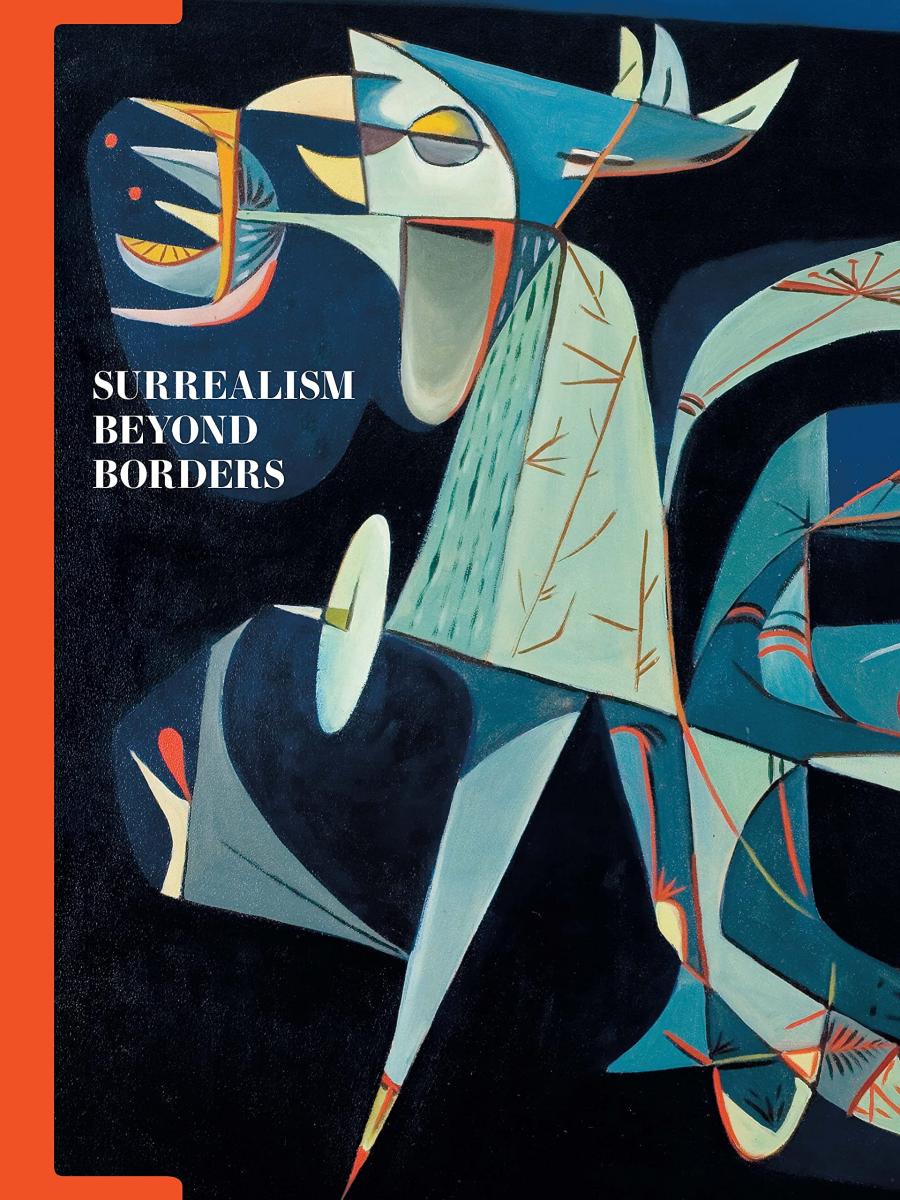
This catalog to a popular exhibition at the Metropolitan Museum of Art (now at the Tate Modern) challenges conventional narratives of Surrealism. The book and exhibition trace the impact and legacy of the movement from the 1920s to the late 1970s in places as diverse as Colombia, Czechoslovakia, Egypt, Japan, Mexico, the Philippines, Romania, Syria, Thailand, and Turkey. The exhibition “proves that the craze for Surrealism surged like a prairie fire independently in individuals and groups in some forty-five countries around the world... The variety of discoveries, detailed with exceptional scholarship in a ravishing keeper of a catalogue, defeat generalization.” --Peter Schjeldahl, The New Yorker
FASHION
Here are several new additions to the Library's collection that illuminate our current exhibition, Fabulous Fashion, located in the Peluso Family Exhibition Gallery.
Ami Bouhassane, Robin Muir, Amber Butchart | Lee Miller: Fashion in Wartime Britain
Lee Miller is multiply famous, and even so, you will likely never have known about her work that is celebrated in this book. You may have become aware of her through her association with Man Ray, who she modelled for, collaborated with, and eventually romanced in Paris in the late 1920s and early 1930s. Later, she’d find fame for her reportage during World War II, working as the official war photographer for Vogue. The photographs here fall from the period between and connect the two. “She has borne the whole weight of our studio production through the most difficult period in Brogue’s history,” wrote British Vogue editor Audrey Withers of Miller in the summer of 1941. Despite this, much of her fashion photography—which dominated the pages of British Vogue during World War II—has since been forgotten or overshadowed by her subsequent war reportage. Drawn from a research base of nearly four thousand vintage negatives, this collection showcases more than one hundred stunning photographs from the war era, many of which have not been seen since they were first shot and published in the 1940s. Lee Miller’s recently transcribed appointment diaries and accompanying text by British Vogue Archives’s Robin Muir, fashion historian Amber Butchart, and Miller’s granddaughter, Ami Bouhassane, provide a wealth of new information about the artist's prolific wartime fashion portfolio.
Elizabeth L. Block | Dressing Up: The Women Who Influenced French Fashion
When talking about fashion generally, and haute couture specifically, critics and consumers alike often speak about the designer as an artist whose concerns rise above the mere objects. But like so much art, patronage is at the heart of the story. In Dressing Up, Elizabeth Block upends this narrative of the designer as solo creative genius and introduces us to the newly rich American women who would influence the designers of late nineteenth-century Paris. These nouveau riche Americans joined French socialites and European royals to collaborate and inspire design houses the likes of Charles Frederick Worth, Doucet, and Félix. This lushly illustrated volume gives a new perspective on the Gilded Age style celebrated at this year’s Costume Institute Gala at the Met.
Martin Harrison | Appearances: Fashion Photography Since 1945
Art historian Marin Harrison provides a definitive examination of fashion photography, demonstrating that these photographs are worthy of serious consideration as works of art. Though the initial goal of the photograph might be selling clothes in the pages of women's magazines, Harrison argues that fashion photographers also influence and reflect society's attitudes and obsessions. He discusses the sociological issues behind these photographic trends by examining not only the impact made by fashion photographers but also the influence of certain powerful and creative art directors, like Diana Vreeland and Alexey Brodovitch. The arguments are persuasive, but not nearly as persuasive as the photographs gathered here, featuring works by Richard Avedon, Irving Penn, Francesco Scavullo, Helmut Newton, Robert Mapplethorpe, and many more.
Patrick Mauriès | Androgyne: Fashion + Gender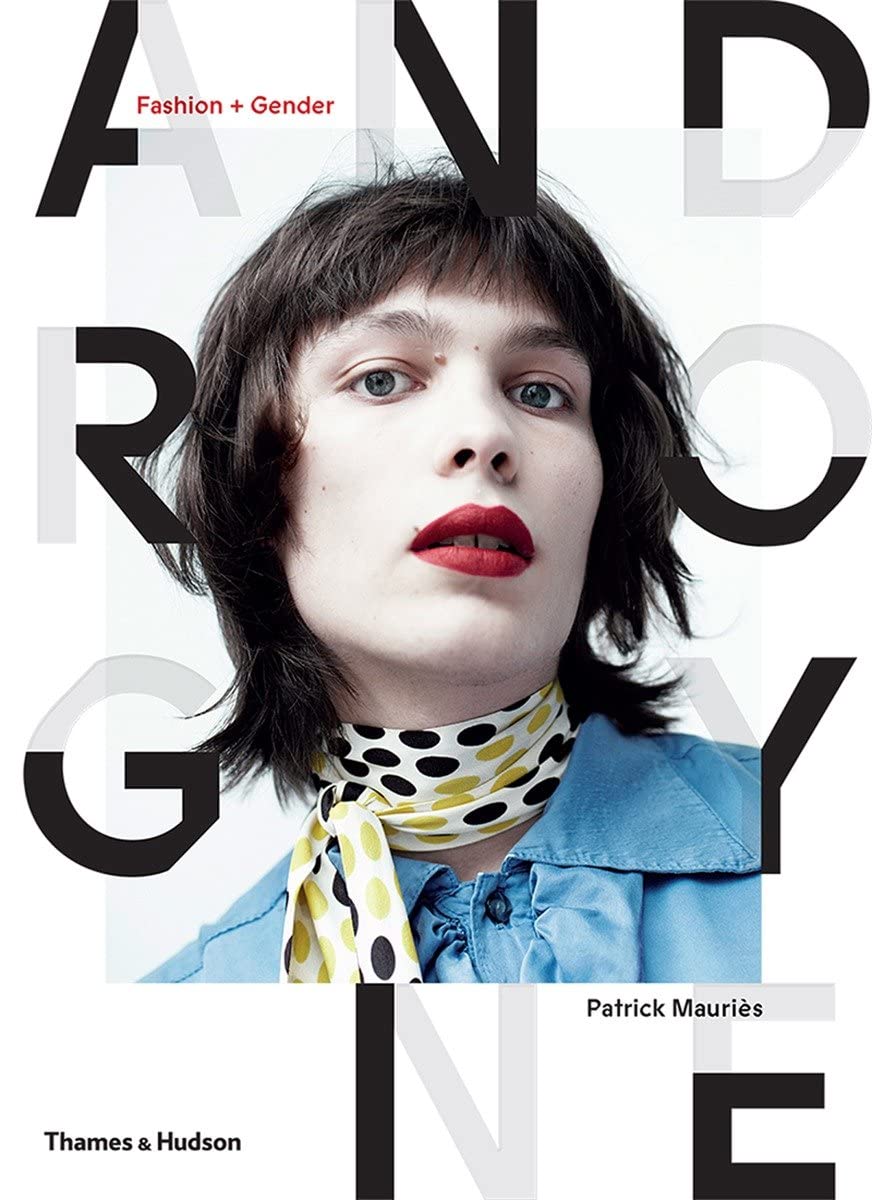
Lest anybody thinks that gender nonconformity and explorations of androgyny are recent developments, Patrick Mauriès’s visual tour through the 19th and 20th centuries will demonstrate that it has long been at the forefront of art and fashion. From the art of Edward Burne-Jones and the writings of Oscar Wilde to the androgynous sex symbols Greta Garbo and Marlene Dietrich; from the 1940s Bright Young Things to the androgynous pop stars of the 1970s, and beyond—artists and designers have been keen to blur the gender boundaries. Patrick Mauriès presents a selection of stunning images, from nineteenth-century painting to contemporary fashion photography, to illuminate the fascination we have with the escape from rigid gender categories.
Sofi Thanhauser | Worn: A People’s History of Clothing
“There is scarcely a part of the human experience, historic or current, that the story of clothes does not touch” writes Sofi Thanhauser in Worn. Upon finishing the book, one sees that she doesn’t exaggerate. Here, Thanhauser traces human history and examines our current world through five fabrics; linen, cotton, silk, synthetics and wool. Most of the news is not good – the cotton industry, historically, has been central to colonization in India and slavery in the American South. Currently, the cotton cultivation is responsible for approximately one-fifth of all pesticide use, and textile dying responsible for 20% of global waste water. Though Thanhauser does not have all the answers, she does find reasons to hope (stick around for the knitting anarchists). About Worn, the WSJ declares, “It’s admirable, meticulously researched, and although occasionally tendentious, makes us pay attention.”
Two of the most iconic thinkers of the twentieth century, Hannah Arendt and Isaiah Berlin, fundamentally disagreed on well, everything, it seems: politics, history, philosophy, the true meaning of what it means to be free. Despite many overlapping experiences as Jewish 20th-century émigré intellectuals, their relationship was fraught, to say the least. (Berlin once described Arendt as “"everything that I detest most.") This is the first book to examine their relationship, their long-standing feud, and the lessons we can learn from it. Norman Lebrecht, writing in the Wall Street Journal: “the hitherto unexplored relationship between these two giants is fascinating not just for its simmering acrimony but because, as a pair, they are as much alike as they are antipodes.” The Library also recently acquired this new Arendt biography by Samantha Rose Hill (assistant director of the Hannah Arendt Center for Politics and Humanities at Bard College), a recent entry in Reaktion Books’ “Critical Lives” series.
Benjamin J.B. Lipscomb | The Women Are Up to Something: How Elizabeth Anscombe, Philippa Foot, Mary Midgley, and Iris Murdoch Revolutionized Ethics 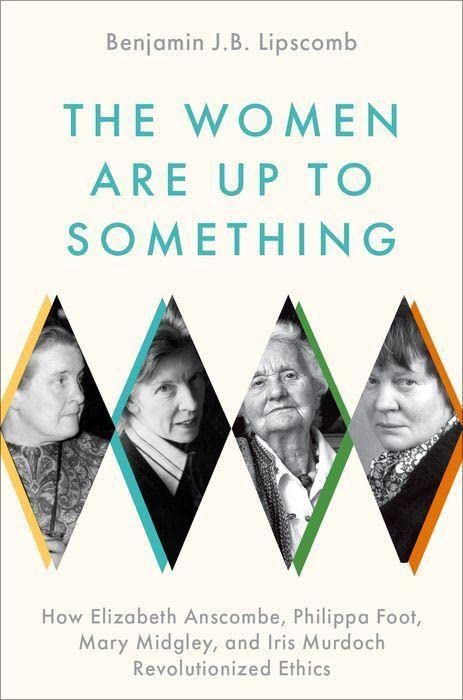
A 2021 group biography that examines how these four influential philosophers flourished in WWII-era Oxford. Using newly opened archives and the philosophers’ unpublished correspondence, Lipscomb examines their lives, friendships, and how each thinker forged a place for themselves in a male-dominated world. Lipscomb makes the argument that they achieved “something revolutionary” by reintegrating ethics into philosophy at a time when it was out of fashion. In the TLS, Kate Manne takes Lipscomb to task for some of his readings of their work but writes that the book “paints a vivid and touching picture of the friendships between these four women, as they evolved through their lives.” Surprisingly, in May 2022, we received another group biography of the same four women: Metaphysical Animals: How Four Women Brought Philosophy Back to Life, by Clare Mac Cumhaill and Rachael Wiseman.
Adam Kirsch | Come and Hear: What I Saw in My Seven-and-a-Half-Year Journey Through the Talmud
Spurred by a curiosity about Daf Yomi—a study program launched in the 1920s in which Jews around the world read one page of the Talmud every day for 2,711 days, or about seven and a half years—Adam Kirsch approached Tablet magazine to write a weekly column about his own Daf Yomi experience. An avowedly secular Jew, Kirsch did not have a religious source for his interest in the Talmud; rather he approached the text as a student of Jewish literature and history. As a critic, poet, and journalist, Kirsch has experience exploring difficult texts, and in Come and Hear he discusses what he finds in the Talmud, and why it matters.
Roberto Calasso | The Book of All Books (translated from the Italian by Tim Parks)
Roberto Calasso, a prolific author and very influential publisher (Adelphi Edizioni) died in July 2021. This book was published in English translation (by Tim Parks) later in the year. The Book of All Books is Calasso’s last work in a multi-volume series going back to the 1980s, beginning with the bestselling and acclaimed The Marriage of Cadmus & Harmony, which seeks to link mythological thinking with the culture of modernity in Europe. Combining original retellings from the Hebrew Bible with wide-ranging and learned analysis and digressions, Calasso “attempts to draw out connections between literature from the ancient world and modern sensibilities [and] in this by and large it succeeds, helping to show how and why the Bible still has power to speak.” (TLS). The Scotsman: “This is an intriguing and ingenious book...a wonderful finale to a career. To be lucid and clever without being arcane or simplistic is a great gift.”
Brian Ogren | Kabbalah and the Founding of America: The Early Influence of Jewish Thought in the New World
Ogren (Professor, Judaic Studies, Rice University) traces the influence of Kabbalah on early Christian Americans. It offers a new picture of Jewish-Christian intellectual exchange in pre-Revolutionary America, and illuminates how Kabbalah helped to shape early American religious sensibilities. The volume demonstrates that key figures, including the well-known Puritan ministers Cotton Mather and Increase Mather and Yale University President Ezra Stiles, developed theological ideas that were deeply influenced by Kabbalah. Library Journal: “a tour de force, a well-written and captivating volume that reexamines the role of religion in the period leading up to American independence. A must for readers interested in an often untold perspective on the history and religious identity of the United States.”
